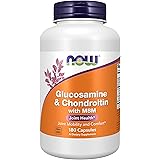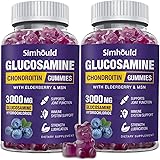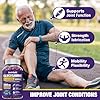Understanding Joint Pain in Weightlifting
Recognizing the Symptoms
As someone who’s spent countless hours in the gym, I’ve had my fair share of joint pain. The first step to relief is recognizing the symptoms. You might notice that soreness in your knees, elbows, or shoulders seems to linger longer than usual after a heavy lift. It’s not just your typical post-workout soreness; it feels different and can often leave you questioning your ability to continue your training.
Sometimes, it’s not always pain that signals an issue. Cracking or popping sounds during movement can be an early indication that your joints need some care. I remember a time when my shoulder was popping a lot; it was a bit concerning! Keeping an ear out for these sounds can be a good habit to adopt.
Finally, joint stiffness, particularly after a workout or prolonged periods of inactivity, can also signal that something’s off. If you find it takes longer to “warm up” those joints than it did before, it’s worth paying attention to. This was a huge signal for me that I needed to tweak my routine.
Incorporating Proper Warm-up and Cool-down Routines
The Importance of Warming Up
Now let’s face it, who really likes to spend extra time warming up? When I first started, I thought I could just jump straight into my lifts. Big mistake! Proper warm-up routines prepare your muscles and joints for the demands of weightlifting. Dynamic stretches, light cardio, and mobility work can all help in getting your joints moving smoothly before hitting those heavy weights.
I personally love foam rolling and some light dynamic stretches to get the blood flowing. Grabbing a resistance band and doing some activation drills is also super helpful. It warms me up mentally as well as physically, and I feel like I’m setting myself up for success.
And don’t forget about the cool-down! Too often I neglected this step, but it’s crucial. A proper cool-down helps reduce stiffness post-workout, decreases soreness, and can help in recovery. Incorporating static stretches after a lift can also improve flexibility, taking a load off those joints in the long run.
Strengthening Supporting Muscles
Building Stability and Support
It took me a while to realize that focusing solely on my main lifts wasn’t enough. To protect my joints, I had to strengthen the supporting muscles around them. This means working on those smaller muscles that often get neglected during heavy lifts. Exercises like banded side steps for hip stability, tricep extensions, and rotator cuff work have made a significant difference for me.
The Best Joint Support (Naturally) Starts with Organic Nutritional Support!
Get 40% Off Here ...
Incorporating accessory lifts into my routine helped me feel more stable during my primary lifts. For instance, doing single-leg exercises improved my balance and strengthened my knees. I love integrating unilateral movements; it not only helps with balance but also corrects any strength imbalances.
Regularly incorporating core workouts is also essential, as a strong core provides a solid foundation for all your lifts. I can feel the difference when I’m on my game with core work. It’s crazy how much a strong core can reduce the strain on your joints while lifting! Don’t skip it.
Listening to Your Body: Pushing vs. Resisting
The Fine Line Between Pushing Through and Overdoing It
One of the toughest lessons I learned was knowing when to push through the pain and when to back off. There’s that line between being a warrior in the gym and being foolish. I had to train myself to tune into my body’s signals. If something doesn’t feel right or if I’m experiencing sharp pain, I now know it’s essential to reassess my approach.
Good Joint Health Requires Good Nutrition Health. Click Here for More Info
Especially for weightlifters, the ego can often take over, urging us to lift heavier regardless of joint health. I have found that if I take that extra week to recover or switch to lighter weights, I usually come back stronger and ultimately prevent burnout or injury. It’s tough but so necessary!
Keeping a workout journal to track my lifts and how my body feels has helped me immensely. It gives clarity into patterns of pain and performance. I encourage everyone to give it a shot; it can lead to those light bulb moments that help avoid joint issues.
Utilizing Recovery Techniques
Effective Rest and Recovery Strategies
The importance of recovery cannot be overstated! I used to treat recovery as an afterthought, but now I know better. Techniques like ice baths, foam rolling, and even more holistic practices like yoga can aid in joint health. They help flush out lactic acid and improve circulation, which is crucial for joint recovery.
Moreover, don’t overlook the benefits of good sleep. Rest is when your body truly repairs itself. Establishing a proper sleep routine has been a game changer for me. I make it a priority now – no late-night online shopping marathons on workout days! Better sleep contributes to better performance in the gym and helps in keeping those nagging aches at bay.
Lastly, consider talking to a professional, like a physiotherapist or a chiropractor. They can provide personalized recovery strategies that fit your body’s unique needs and help you stay on the right track. I’ve learned so much from my sessions; they’ve provided insights I wouldn’t have thought of on my own.
FAQs
1. How can I recognize joint pain versus normal soreness?
Joint pain is often sharper or more localized than normal muscle soreness, which usually feels more diffuse and less intense after a workout.
2. What are some effective warm-up exercises I can do before lifting?
Dynamic stretches like arm circles, leg swings, and light jogging are fantastic ways to get warmed up. Foam rolling is also very effective.
3. How do I choose the right accessory lifts for joint support?
Focus on areas that normally feel weaker or more fatigued. Look for exercises that strengthen stabilizers, such as single-leg movements, which can enhance overall lift stability.
4. When should I seek professional help for my joint pain?
If your joint pain is persistent, sharp, or affecting your daily life, it’s best to consult a healthcare professional to assess your situation and recommend a proper course of action.
5. How important is nutrition in joint recovery?
Nutrition plays a significant role in recovery. Consuming anti-inflammatory foods like omega-3 fatty acids or antioxidants can support joint health and speed up recovery.


























































